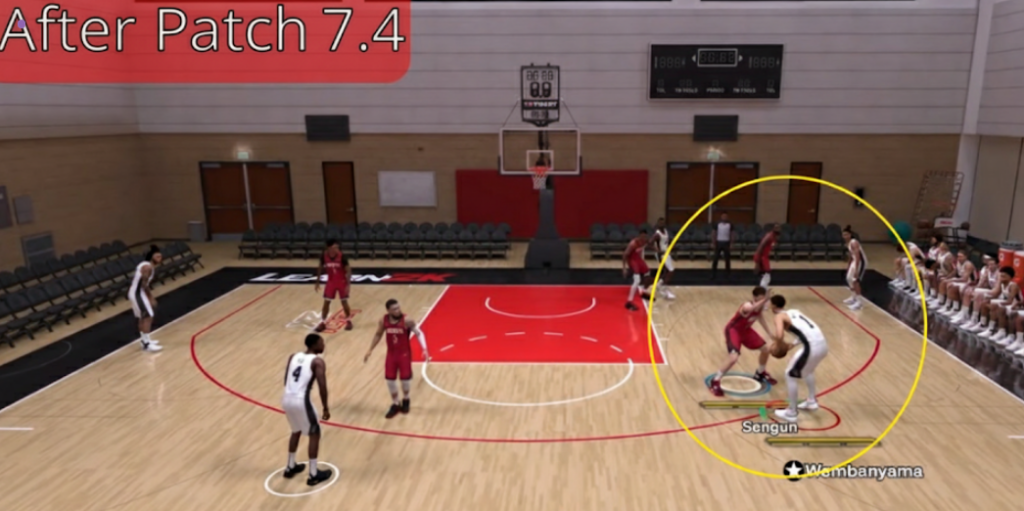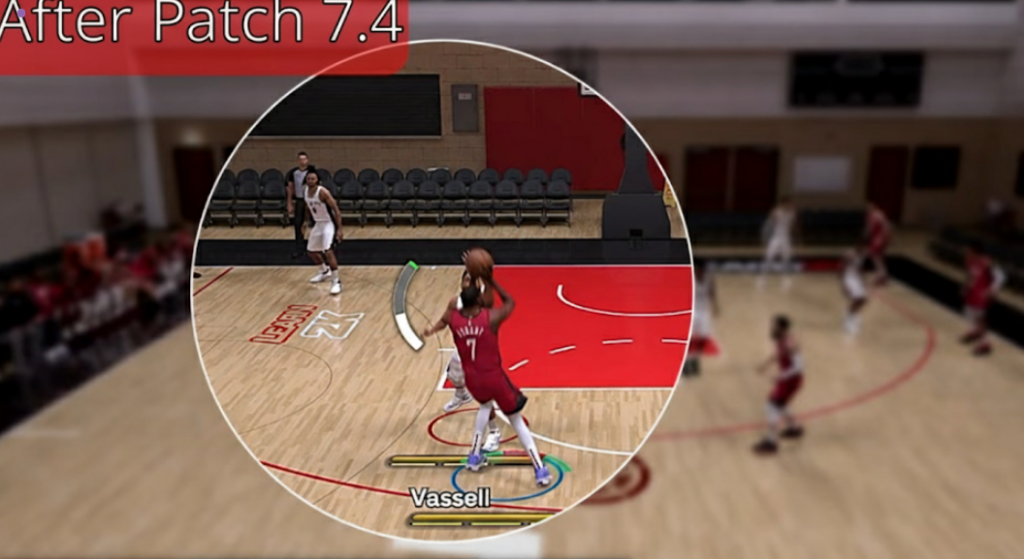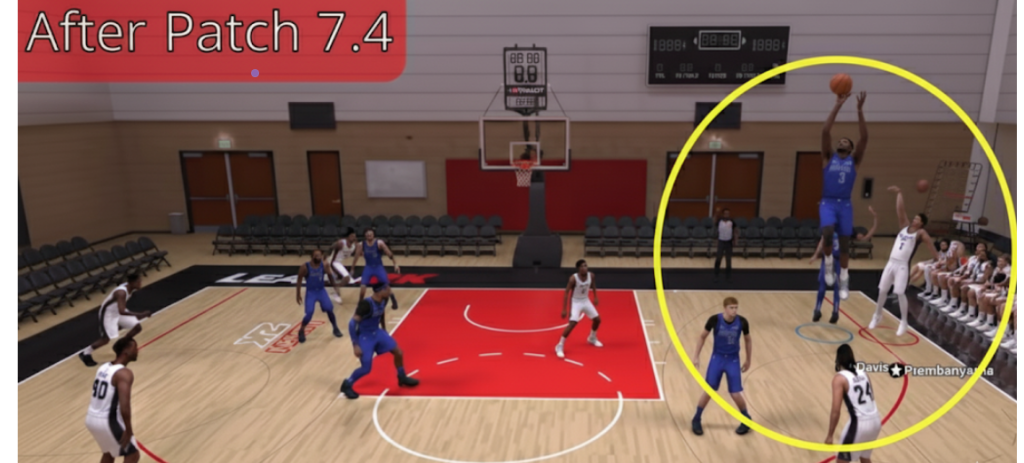Every dedicated NBA 2K26 player knows the pain: you’re perfectly positioned, arms raised, only to watch a 7’4” giant drain a contested shot like you weren’t even there. The so-called “7’4 Meta” has dominated the game for weeks, leaving defense feeling hopeless and one-dimensional.
Now, a major Contest Update has arrived, aiming to reduce the unfair advantage of extreme height and reward skillful, well-timed contests. But as with any sweeping balance change, the community is divided. Has 2K finally fixed defense, or has it simply created a new set of issues?
This analysis breaks down the mechanics of the new contest system, evaluates its effect on the tall-build meta, and highlights unintended side effects — including the rise of “ghost contests.” Consider this your tactical roadmap to mastering defense in the new NBA 2K26.
The Core Shifts: How Contests Have Been Rewritten

The Contest Update fundamentally reshapes how defense interacts with offense. Previously, height dictated outcomes; now, timing and positioning carry more weight.
Visual Concepts explicitly reduced the raw influence of a defender’s height, giving shorter players a real chance to contest taller shooters. This is a pivot away from attribute-driven results toward rewarding active player input.
- Pre-patch: A 6’6” Draymond Green contesting a 7’4” center barely registered — maybe 10% coverage with hands up.
- Post-patch: That same contest yields over 30% coverage, a threefold improvement that restores viability to smaller defenders.
On top of this, the update boosts the ceiling for well-timed jump contests. For example, Anthony Davis once capped at around 63% contest on jump shots. Now, with ideal timing, he reaches closer to 78%. Defense feels more skill-based and interactive, not predetermined by wingspan alone.
Tackling the 7’4 Meta: Fades and Interior Scoring

The burning question for most players: does this patch finally nerf the towering 7’4” builds? The answer is… mostly.
Fades Under Fire: A New Perimeter Reality
Fadeaways, once nearly unstoppable against shorter defenders, are no longer free buckets. Jumping at the right time now produces significantly higher contest ratings.
- Example: Devin Vassell, a 6’5” guard, can now hit 35–45% contest coverage against fades. Pre-patch, these efforts barely registered.
This means defenders have a genuine chance to disrupt taller shot-creators. Fadeaway spam, a hallmark of the 7’4 meta, is finally losing its grip on the game.
Post and Close Shots: Unintended “Ghost Contests”
However, the update also introduced a wrinkle: ghost contests. In certain situations — especially on post hooks, close shots, or moving middies — even poorly timed or poorly positioned defenders are registering unexpectedly high contest percentages (20–45%).
This overcorrection risks punishing skilled post players. Instead of rewarding footwork and positioning, the system may sometimes inflate contest values unfairly, discouraging a nuanced interior game. Unless tuned, this could push the meta toward perimeter-heavy spacing, reducing the variety of viable offensive styles.
Strategic Implications: Adapting to the New Defensive Reality
With the Contest Update live, adapting your game plan is essential. Passive defense won’t cut it — active, precise execution is now the difference-maker.
1. Master Lateral Movement & Positioning
Standing still with arms up is obsolete. You need to move with your man, cut off angles, and contest from the right position. Front-facing, square contests deliver the strongest coverage boosts, particularly against moving shots like fades.
2. The Revival of the Block Attribute

For years, Block was undervalued outside of rim protection. Now, it’s vital for jump contests on the perimeter as well. Tall players with high Block ratings can push contests into the red zone, especially with perfect timing. This elevates defenders like Anthony Davis, Jaren Jackson Jr., and other elite rim protectors.
3. Help Defense and Exploiting Ghost Contests
Smart help defense is now a reliable counter-strategy. By funneling scorers into secondary defenders or toward a shot-blocking big, you can amplify contest values — sometimes artificially, thanks to ghost contests. While not ideal for balance, it’s a tool that competitive players can’t ignore.
Looking Ahead: No Download, Instant Change
The NBA 2K26 Contest Update rolled out automatically on September 22 at 2 AM PT for PlayStation 5, Xbox Series X|S, PC, and Nintendo Switch 2. No download was required — players just needed to return to the Main Menu.
This smooth transition can have the whole player base on the new defensive mechanics, and as such, the level of playing will be even day one of the patch.
Final Take: Progress with Caveats
The Contest Update is one of the boldest balance changes in recent NBA 2K history. On the plus side:
- Height mismatches no longer dictate outcomes.
- Well-timed contests finally matter.
- Fadeaway spam is significantly less effective.
But the rise of ghost contests highlights the delicate balance between realism and playability. Interior scorers risk being unfairly penalized, and the meta may swing too heavily toward spacing and perimeter play unless further adjustments arrive.
What’s certain is this: the defensive game in NBA 2K26 has changed permanently. Players who embrace active positioning, lateral quickness, and block-timing mastery will thrive. Those who cling to passive, hands-up defense will quickly fall behind.
